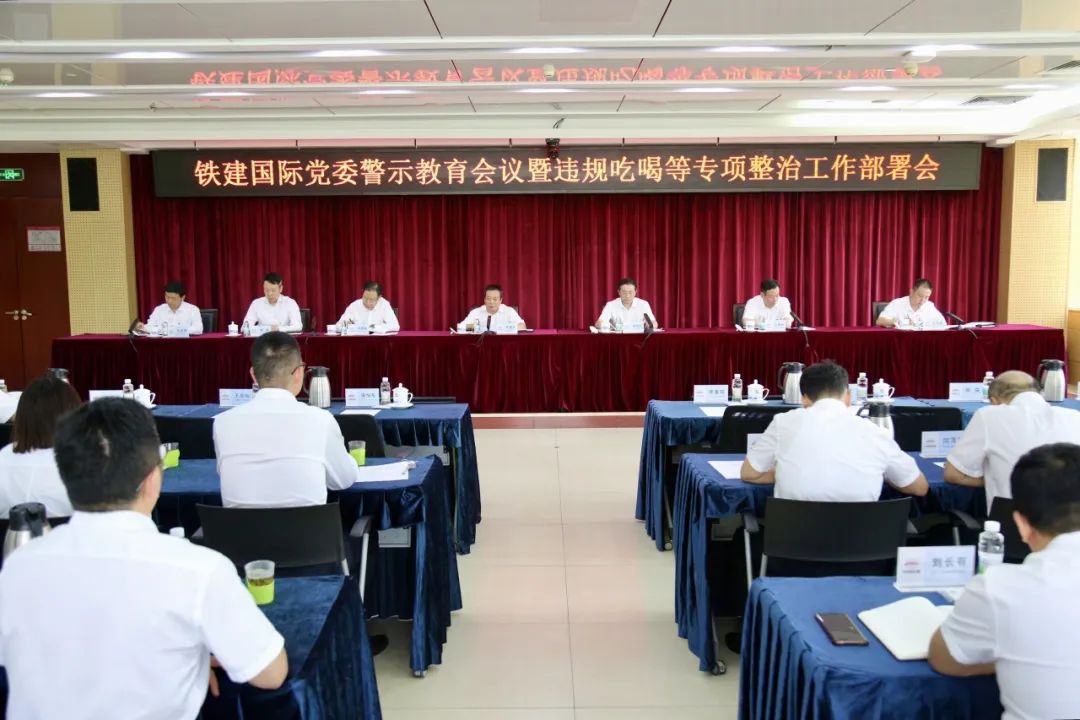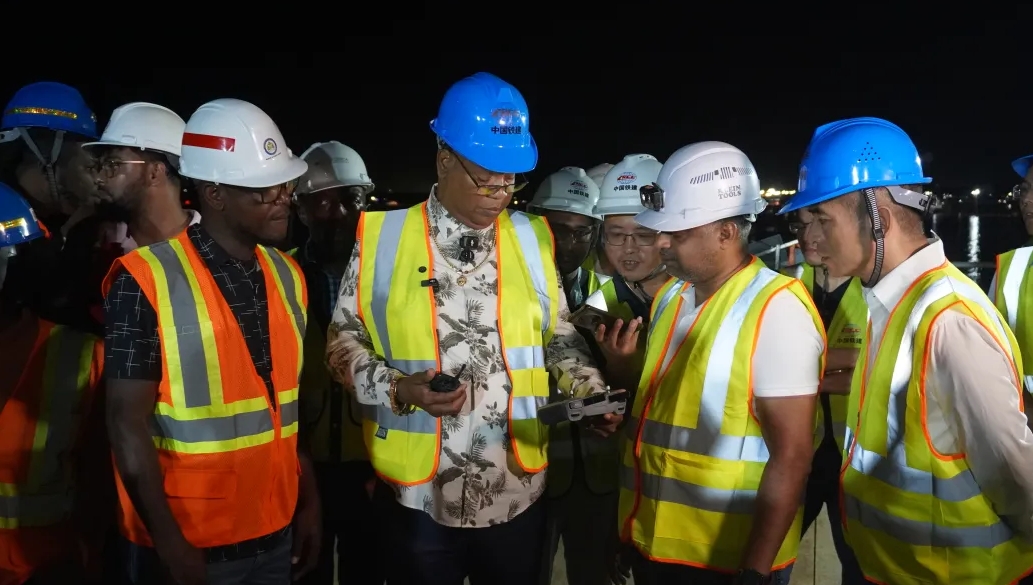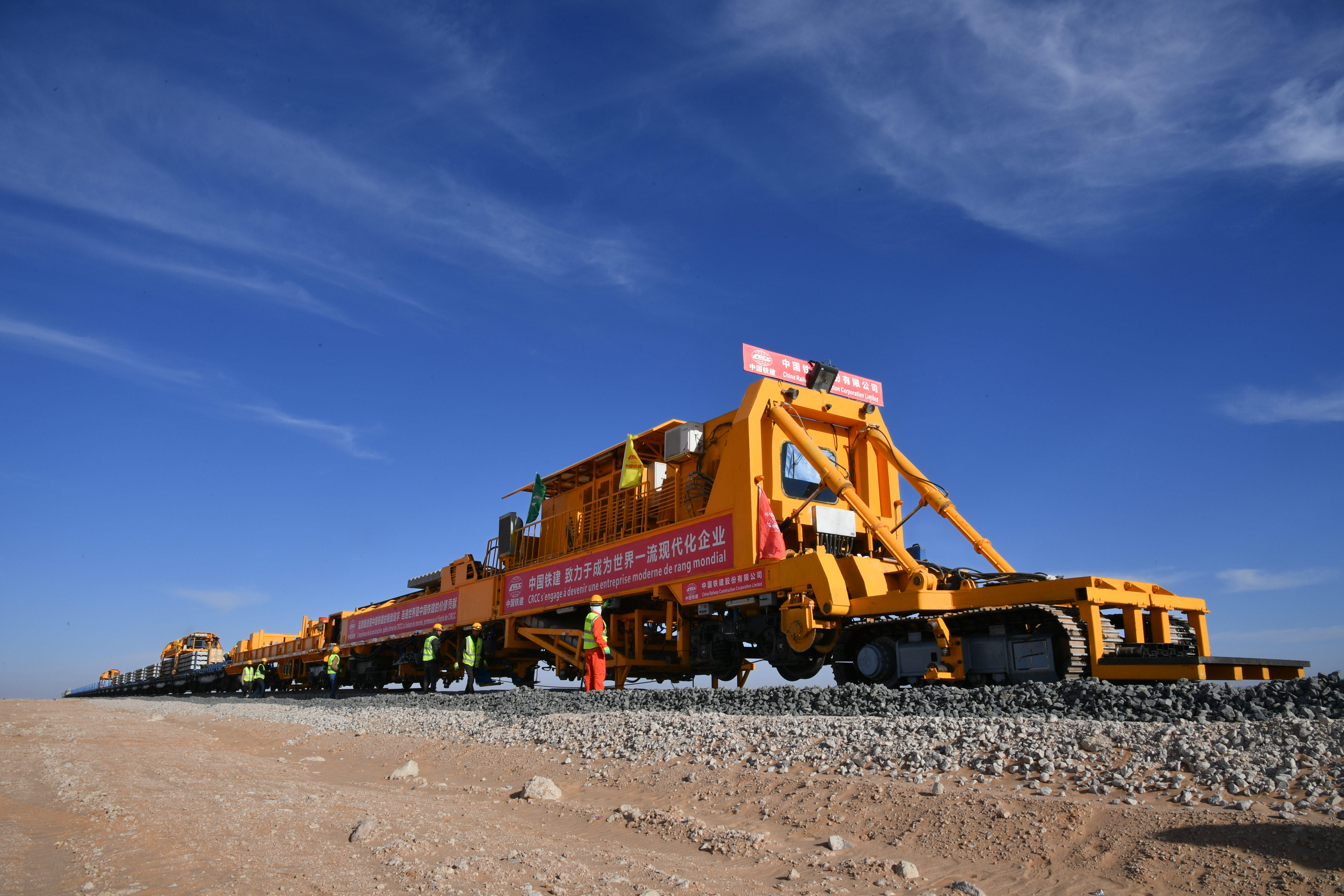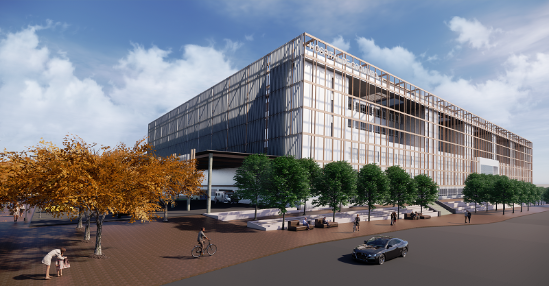- 人民日报:外籍员工,在共建“一带一路”中成长2025-06-27
- 安全生产月,我们在行动2025-06-24
- 人民日报:共护绿水青山 共建美丽家园(央企走出去·绿色发展)2025-06-24
- 李重阳会见香港机场管理局署理工程总监陈浩荣一行2025-06-21
- 铁建国际召开深入贯彻中央八项规定精神学习教育警示教育会议暨违规吃喝等专项整治工作部署会2025-06-20
- 中国青年报:一名加勒比青年眼中的“一带一路”与文化共鸣2025-06-20
- 圭亚那新德梅拉拉河大桥主塔封顶2025-06-19
- 人民日报:“与中企的合作让我们受益良多”2025-06-16
- 新华网:圭亚那公共工程部长称赞中国企业奉献精神2025-06-16
- “童”心“童”行 国际宝贝才艺SHOW!2025-06-11
- 中国铁建连续4年获评中央单位定点帮扶工作成效考核最高等次评价2025-06-26
- 戴和根与越南总理范明政举行会谈2025-06-26
- 戴和根与上海市委常委,临港新片区党工委书记、管委会主任陈金山举行会谈2025-06-25
- 中国铁建召开供应链管理深化提升会议2025-06-24
- 中国铁建召开2024年年度股东大会2025-06-23
- 戴和根与中远海运主要领导举行会谈2025-06-18
- 中国铁建党委举行2025年第9次党委理论学习中心组(扩大)学习会议2025-06-17
- 数科公司成立会议暨工程项目管理信息系统建设启动会在京召开2025-06-13
- 中国铁建境外审计中心揭牌成立2025-06-11
- 中国铁建召开深入贯彻中央八项规定精神学习教育警示教育会议暨违规吃喝专项整治工作部署会2025-06-10
- 国务院国资委党委举办深入贯彻中央八项规定精神学习教育读书班暨国资央企警示教育会 深化以案为戒以案促改 以作风建设新成效更好保障国资央企高质量发展2025-06-03
- 《人民日报》刊发国务院国资委党委署名文章:为高水平科技自立自强贡献国资央企力量2025-06-19
- 国务院国资委党委召开国资央企集中整治违规吃喝推进会 以案为鉴以案促治纠治并举 以作风建设新成效更好保障国资央企高质量发展2025-06-13
- 国务院国资委党委专题深入学习习近平总书记关于加强党的作风建设的重要论述 严字当头部署国资央企集中整治违规吃喝 持之以恒筑牢中央八项规定堤坝2025-06-10
- 国务院国资委全面深化改革领导小组召开2025年第一次全体会议 确保高质量完成国企改革深化提升行动 研究进一步深化国资国企改革方案2025-05-19
- 国务院国资委党委传达学习习近平总书记近期重要讲话精神 立足新起点新形势科学谋划国资央企“十五五”规划2025-05-13
- 国务院国资委党委传达学习习近平总书记近期重要讲话重要指示精神 研究部署贯彻落实举措 更好服务党和国家工作大局2025-05-12
- 国务院国资委党委举办深入贯彻中央八项规定精神学习教育读书班2025-05-06
- 国务院国资委举办“国资大讲堂” 张玉卓会见主讲人林毅夫2025-04-27
- 弘扬企业家精神加快建设世界一流企业专题研讨班开班 张玉卓出席开班式并作首场专题辅导报告2025-04-23
- 中共中央政治局召开会议审议《党中央决策议事协调机构工作条例》中共中央总书记习近平主持会议2025-06-30
- 习近平会见新加坡总理黄循财2025-06-25
- “和睦与团结就是幸福与财富”——习近平主席赴哈萨克斯坦阿斯塔纳出席第二届中国—中亚峰会纪实2025-06-20
- 习近平同俄罗斯总统普京通电话2025-06-20
- 习近平出席第二届中国—中亚峰会并作主旨发言2025-06-18
- 习近平同哈萨克斯坦总统托卡耶夫会谈2025-06-17
- 《求是》杂志发表习近平总书记重要文章《用中长期规划指导经济社会发展是我们党治国理政的一种重要方式》2025-06-16
- 习近平同韩国总统李在明通电话2025-06-11
- 习近平同美国总统特朗普通电话2025-06-06
- "孩子们成长得更好,是我们最大的心愿"——以习近平同志为核心的党中央关心少年儿童成长和少先队工作纪实2025-05-29






















